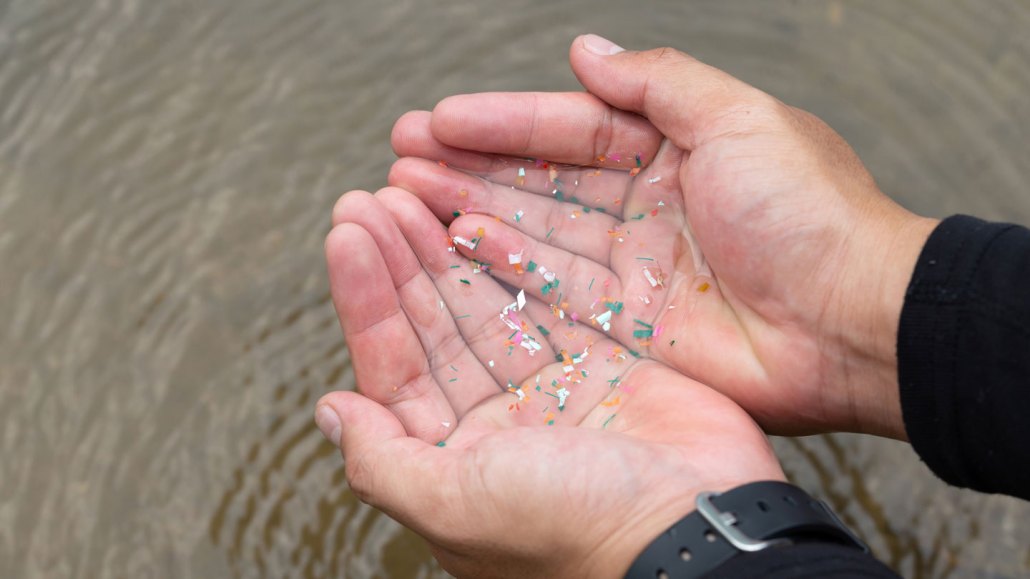Questions for ‘Sea life may suffer as plastic bits alter metals in water’

Tiny, broken fragments of plastic trash (like that seen here) drift through seawater. Such plastic makes up the majority of ocean litter.
pcess609/iStock/Getty Images Plus
Share this:
- Share via email (Opens in new window) Email
- Click to share on Facebook (Opens in new window) Facebook
- Click to share on X (Opens in new window) X
- Click to share on Pinterest (Opens in new window) Pinterest
- Click to share on Reddit (Opens in new window) Reddit
- Share to Google Classroom (Opens in new window) Google Classroom
- Click to print (Opens in new window) Print
To accompany ‘Sea life may suffer as plastic bits alter metals in water‘
SCIENCE
Before Reading:
- Two empty bottles are thrown overboard into the ocean — a plastic bottle and a glass bottle. Please explain how the fate of these items might differ due to what they’re made of. For example, might one travel further? How do you think each item will change over the years? How important is it to accurately predict where our trash winds up and what becomes of that trash over time? Explain your answers.
- Plastic trash makes up more than 80 percent of ocean trash. However, according to a report by the U.S. Environmental Protection Agency, plastics only account for about 12 percent of overall waste produced in the United States. Paper products make up the biggest chunk of trash we discard. Why do you think most ocean litter is plastic when other materials, such as paper, are thrown away more frequently?
During Reading:
- What does the acronym ROS stand for? Describe the role sunlight plays in the production of ROS in seawater. What does Kenneth Nealson mean when he says, “oxygen species are nasty”?
- Besides manganese, list two metals that the story notes are dissolved in seawater.
- Describe the appearance of manganese-coated nanoplastic beads.
- What are zooplankton? What concern does Dušan Palić describe regarding any zooplankton that might encounter manganese-coated plastic?
- How do desert microbes use manganese to endure high levels of sunlight?
- According to Nealson, how did the manganese concentrations used in this study compare with typical seawater? What about light levels?
After Reading:
- Describe one potential concern expressed by scientists in this story regarding this study’s findings. Then describe one potential opportunity. Using both the good and bad aspects, consider how such findings could be presented in a way that misleads people. Explain how an “expert” on TV might describe this study to the public as either overly positive or negative. To what extent do you think such misuse of information is a problem today? Give one example.
- Scientists who study microplastics and metals say that the next step for them will be to determine whether this phenomenon happens in the real world. After all, this early study described in the story took place in a lab. Design a potential follow-up experiment to assess the extent to which this phenomenon also happens in the environment. Describe how someone might go about it carrying it out — and where they should do that.